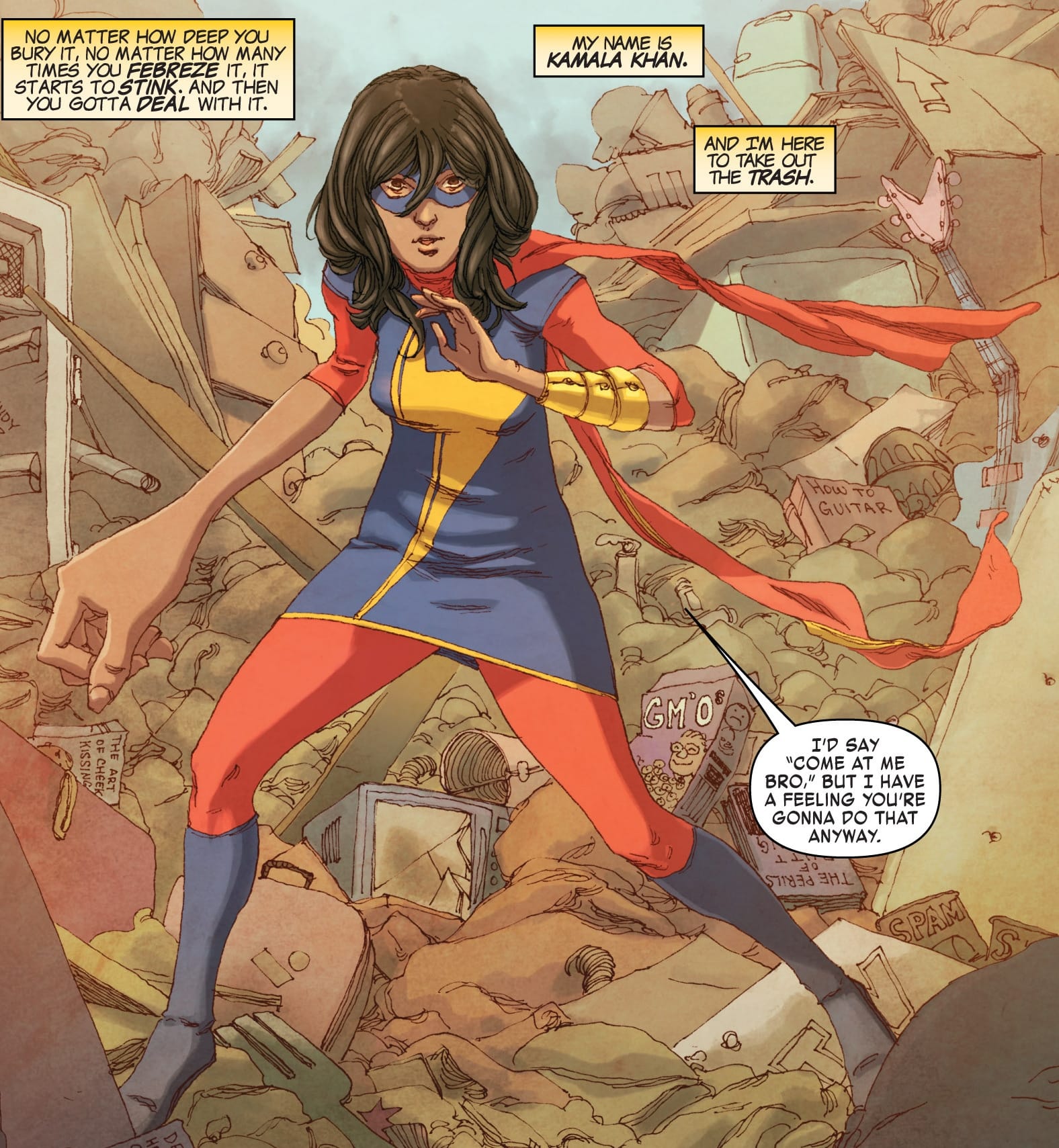Taking Risks
 |
| Captain Native America. It'll make sense in a bit. |
 |
| How did Marvel get away with this? That's clearly Donald Duck. |
The trick is for these risks is twofold. Firstly, any new idea carries the risk of being unprofitable. It doesn't matter that Howard the Duck is new, bold, and different. It's a book about a Disney ripoff that somehow exists in the same universe as Spider-Man. Outside of some niche fandom, Howard has never been that profitable. Similarly, there has been an increased push for female heroes and other diverse representations; but again, these new ideas must ultimately work in the marketplace in order for them to last. It is far easier for the new Pakistani Ms. Marvel to turn a profit because of name recognition. It is important to note that the original Ms. Marvel herself was a character that was spun-off the male Captain Marvel. Again, taking an established character in a radically new direction isn't a new tactic for the genre.
 |
| Does anyone think that this character would work as well if it didn't have Ms. Marvel in the title? |
Therefore, I do not particularly like attaching diversity trends to established properties. When the trend subsides, so does the diversity! If you merely take a black person and put them into the shoes of Spider-Man, what happens when the trend of race and gender swapping gets old? One reason that I think characters like Black Panther, Blade, and Luke Cage have shown some staying power is that they are unique, not just recolors of established characters. Allow me to repeat myself: replacing existing characters with diverse cast choices does not ultimately address diversity in media. In my opinion, all it does is create two problems.
For one, replacing established characters divides your fanbase. While some people will hail the change, people who like the original will probably be alienated. This division does not help your brand in the long term. Secondly and more insidiously, even though you may appear as if you are taking an innovative, diverse course of action, you still haven't actually created anything diverse. Re-branding existing characters just means that you've recolored something old. Further, the cultural statement is dis-empowering. It is admitting defeat when you basically imply that diversity cannot stand on its own merits, but must attach itself to older, more successful ideas.
Although it is debatable if whether there is even a legitimate issue with media diversity to begin with (I submit that depending on how you look at it, there is no such issue), the solution to these potential issues is not to use affirmative action for fictional works. If you want more diverse art, then start typing. Create more diverse art and submit it to the public. Even more importantly, buy the art that you want to support. Complaining about how other people's art doesn't fit your ideology is the most frustrating waste of time that I can possibly imagine.




Comments
Post a Comment